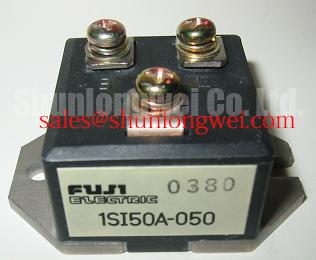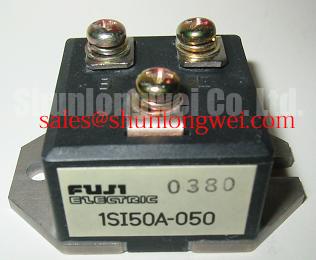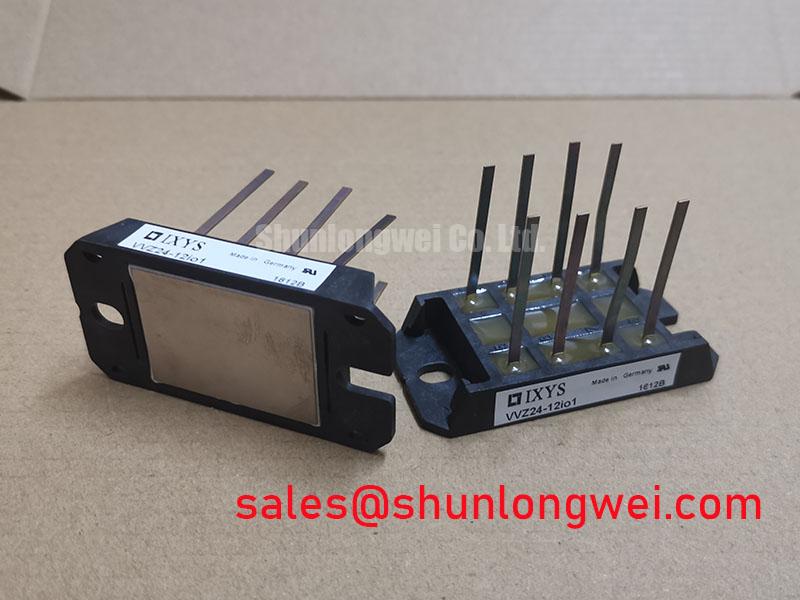Fuji 1SI50A-050 Thyristor Module: Simplified AC Power Control
The Fuji Electric 1SI50A-050 Thyristor Module simplifies the design of AC power controllers by integrating a dual-thyristor configuration with a high-integrity isolated base. This module is engineered to accelerate development and enhance the reliability of industrial power systems. Its integrated nature streamlines the entire process from circuit layout to final assembly. The module's 2500V isolation voltage allows direct mounting to a heatsink without requiring additional, often fragile, insulating pads, which simplifies thermal management and reduces mechanical complexity.
Top Specs: 500V | 50A | Viso 2500V
Key Benefits: Reduces assembly component count. Simplifies thermal system design.
Streamlining Designs in Industrial AC Control
The 1SI50A-050 is fundamentally designed to reduce complexity in systems that require precise control over AC power. Its capabilities are particularly valuable in applications where space, assembly time, and long-term reliability are key design drivers. By housing two anti-parallel thyristors in a single, robust package, it provides a more streamlined alternative to using two separate discrete components.
- Industrial Heating and Temperature Control: In equipment such as industrial ovens, furnaces, and plastic molding machines, the module enables smooth, proportional control of heating elements, ensuring stable process temperatures and improving end-product quality.
- Motor Soft Starters: For smaller AC induction motors, the 1SI50A-050 can be used to implement phase-angle control for soft-start functionality, reducing mechanical stress on gearboxes and electrical stress on the power line during motor startup.
- Commercial and Theatrical Lighting: The module serves as a robust power-handling component in high-power light dimming systems, providing reliable control for stage lighting and architectural illumination where simple, effective power regulation is required.
- Static VAR Compensators (SVC): In smaller-scale power factor correction systems, this thyristor module can be employed to switch capacitor banks, helping to stabilize voltage on the local AC line.
For 200V AC line controllers requiring up to 50A, the 1SI50A-050's integrated, 2500V-isolated design offers the most direct path to a compact and reliable build.
Key Parameters for Efficient Integration
The specifications of the 1SI50A-050 are tailored for straightforward integration into industrial power circuits. Understanding these key parameters, as detailed in the official datasheet, is crucial for leveraging the module's full potential.
| Parameter | Value | Engineering Significance |
|---|---|---|
| Repetitive Peak Off-State Voltage (VDRM) | 500 V | Provides sufficient voltage margin for stable operation on standard 200-240V AC power lines, accommodating typical line fluctuations. |
| Average On-State Current (IT(AV)) | 50 A | Defines the module's continuous current handling capability, making it suitable for a wide range of medium-power control applications. |
| Isolation Voltage (Viso) | 2500 V (AC, 1 min.) | Guarantees high dielectric strength between the electrical terminals and the mounting base, enhancing safety and enabling direct heatsink mounting. |
| Peak Gate Power (PGM) | 5 W | Specifies the maximum power the gate circuit can handle, a critical value for designing a robust and reliable gate drive circuit. For more on this topic, see this guide to robust gate drive design. |
The 2500V isolation voltage acts like a built-in electrical safety barrier between the module and its mounting surface. This is analogous to having a high-quality insulator pre-applied, which eliminates the procurement and assembly of a separate, and often mechanically delicate, thermal pad. This integration is a core feature that directly reduces assembly time and a potential point of failure.
Field-Proven Integration: A Use Case Snapshot
A manufacturer of commercial bakery ovens was seeking to improve both the manufacturing efficiency and field reliability of their temperature control units. Their previous design utilized two discrete stud-mount thyristors, which required separate wiring, multiple mounting holes, and careful installation of mica insulators to prevent short circuits to the chassis. This process was time-consuming and prone to assembly errors, leading to inconsistent thermal performance.
By redesigning their control board around the 1SI50A-050 Thyristor Module, the engineering team achieved several key objectives. The single-module solution reduced component count and simplified the PCB layout. What is the benefit of an integrated thyristor pair? It simplifies circuit layout and reduces assembly complexity. The isolated base allowed the module to be mounted directly onto a shared heatsink, which standardized the thermal interface and improved heat dissipation consistency across units. This change resulted in a 30% reduction in assembly time for the power stage and a measurable decrease in field failures related to insulation breakdown.
Informed Component Selection: Module vs. Discrete
Choosing between an integrated module like the 1SI50A-050 and a solution built from two discrete thyristors involves trade-offs in design complexity, manufacturing cost, and reliability. The following comparison provides data points to support your engineering evaluation.
| Evaluation Aspect | Fuji Electric 1SI50A-050 Module | Typical Dual Discrete Thyristor Solution |
|---|---|---|
| Component Count | 1 power module | 2 thyristors, 2 insulators, multiple fasteners |
| Assembly Steps | Mount one module, connect terminals | Mount two devices, install two insulators, wire terminals individually |
| Thermal Interface | Single, flat, isolated surface | Two separate surfaces, requiring matched mounting pressure and insulator integrity |
| Potential Failure Points | Fewer mechanical interfaces | Insulator puncture, loose wiring, mismatched thermal contact |
For applications where reducing manufacturing complexity and enhancing thermal predictability are priorities, a module-based approach often presents a compelling case. For systems requiring different current or voltage ratings, other integrated solutions like the MDD95-12N1B diode module may also be considered for different circuit functions.
The Strategic Value of Integrated Power Components
The adoption of integrated power modules like the 1SI50A-050 aligns with a broader industry trend towards modularity and design simplification. In today's competitive landscape, engineers are tasked not just with meeting performance specifications, but also with reducing the total cost of ownership (TCO) for the end customer. An integrated component directly contributes to this goal by lowering assembly labor costs, reducing the number of parts in the bill of materials (BOM), and minimizing potential points of failure that could lead to costly field service.
Furthermore, using pre-validated, integrated modules from established manufacturers like Fuji Electric can de-risk the design process. These modules undergo extensive testing for electrical performance, thermal cycling, and isolation integrity, providing a level of reliability that is often difficult and expensive to achieve with a discrete-component design. This approach allows engineering teams to focus their resources on system-level innovation rather than on the intricacies of power component assembly and validation.
An Inside Look at the 1SI50A-050's Construction
The design of the 1SI50A-050 is focused on providing a mechanically simple and electrically robust solution. The internal architecture connects two thyristor chips in an anti-parallel configuration, the standard topology for single-phase AC control. These chips are mounted on a direct bonded copper (DBC) substrate, which provides excellent thermal conductivity while also serving as the foundation for the electrical isolation.
How does the isolated base help? It allows direct mounting to a heatsink without extra insulation. This entire assembly is encapsulated in an industrial-grade housing with screw terminals designed for secure and reliable connections. The flat copper baseplate ensures an even, low-resistance thermal path to the heatsink, which is critical for extracting heat and maintaining a safe operating temperature. This thoughtful construction is a key factor in the module's ability to simplify system design without compromising on performance or safety.
To further explore the principles behind power module specifications, you may find this guide on decoding datasheets a useful resource for your design process.
For engineers and procurement managers looking to streamline the development and production of AC power controllers, the 1SI50A-050 offers a clear path to a more efficient and reliable design. To evaluate its suitability for your specific application, please consult the official datasheet or contact us for further information.












